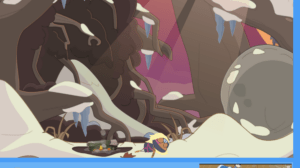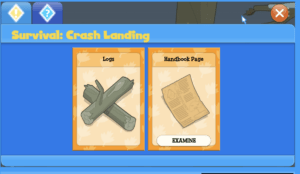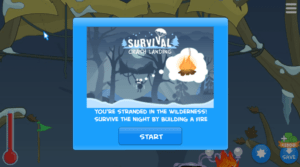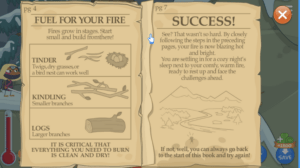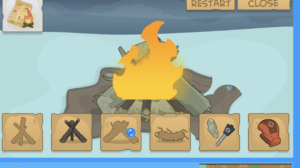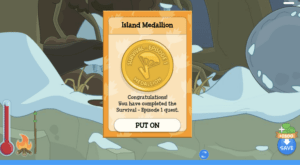Our Game
For Project 2, my team and I are developing an escape room adventure that takes place in an elementary school where the toys are conscious beings, including the player. Currently, our puzzles were made to be completed in isolation and do not have much connection to one another aside from their links in the narrative’s flow. To investigate the pros and cons of having puzzles that are dependent on each other, I decided to play Poptropica: Survival Island 1.
What is Poptropica and how is it a puzzle game?
Poptropica is an online role-play and quest game developed by Pearson Education’s Family Education Network. As a kid, I played a ton of Poptropica, but the “islands” or the quests were always too difficult for me to complete. For that reason, I would say the target audience of this game is puzzle lovers above the age of 12.
While the quests are quite challenging for younger players, the mechanics are very simple. You use your mouse to walk and jump, looking for clues, and collecting items to help you finish your mission. The quests involve completing some sort of task in the theme of the island like “BUILD A FIRE TO SURVIVE” in the case of the island I played. I argue that the quest objective is just one huge puzzle because it requires the player to collect pieces of information and artifacts that they must put together to complete the mission.
Gameplay
Survival Island 1 is an embedded narrative that begins with the player stuck in a tree surrounded by snow. The only piece of narrative given in the beginning is that the temperature is dropping quickly and to survive, you must find a way to build a fire as soon as you can. The narrative didn’t develop throughout the game which made me feel disconnected from the character I was playing and also hindered my motivation to complete the quest.
Survival Island 1 had a great mix of puzzle pieces that were obvious and ones that were more hidden or elaborate. The first artifact I found was a loose page from a survival guide which was in plain sight. This clue made it clear to me that I would need to continue looking for loose pages from the book to learn how to construct the fire. The less obvious clues provided a solid balance between difficulty and fun by requiring me to work for the satisfaction of figuring the puzzle out. A good example of an elaborate puzzle is when I had to use all the materials I collected to construct and maintain the fire.
The game architecture of this island resembles that of our escape room as it was divided into 3 different sections. The game requires that the player moves back and forth between the different sections to collect puzzle pieces in one section to use in the other. I liked this structure because it made sure that I was not static. The mechanic of structuring the game in this way makes it so the player’s end up knowing the map like the back of their hand. The player becomes well-versed in the game’s world which makes it easier to make connections between puzzles. Overall, I found it immensely satisfying when all the pieces I gathered came together. Imagine how much more satisfying it would have been if the narrative was just as compelling …
